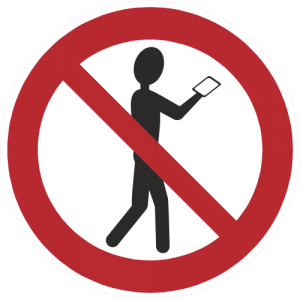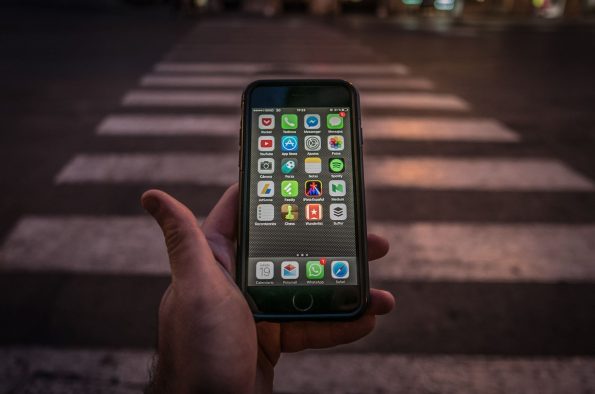Crossing the road requires a complex set of mental calculations to judge the speed and distance of approaching vehicles vs the ability for you to get across the road. Texting, talking and using apps while you are walking leads to an increased reaction time and less chance of perceiving dangers accurately.
 Teenagers and young adults are the people most likely to be distracted by a cellphone while walking near roads; studies in the USA found that mobile phone-related injuries are higher in young people (especially teens). It’s not just looking at the phone that’s a distraction, but having ear buds in or headphones on while using the phone to listen to music or podcasts which not only takes a person’s attention from the road, but also makes it more difficult for them to hear approaching vehicles.
Teenagers and young adults are the people most likely to be distracted by a cellphone while walking near roads; studies in the USA found that mobile phone-related injuries are higher in young people (especially teens). It’s not just looking at the phone that’s a distraction, but having ear buds in or headphones on while using the phone to listen to music or podcasts which not only takes a person’s attention from the road, but also makes it more difficult for them to hear approaching vehicles.
If cellphone users cross at a legal pedestrian crossing then vehicles expect to stop automatically, but when a person crosses at a place that’s not an intersection (i.e. somewhere more than 20m from a crossing, the accident risk goes up 800%. Even at signalised crossings (i.e. where the pedestrian has to wait for a green man signal to cross), the risks are higher because around 20% of crossings are made when the light is red.
It’s estimated that up to 40% of pedestrians may be distracted by mobile phones when crossing the road, and in a study of around 500 people, 30% of those aged 18-30 reported that they used a phone to text or access the internet while crossing the road. When using a phone, pedestrians:
- Walk more slowly
- Change direction more frequently
- Take longer to react
- Look around them less
- Are less likely to look at traffic while crossing
- Spend more time looking away from the road
- Take longer to decide to cross
- Are more likely to cross unsafely into oncoming traffic
- Miss more safe opportunities to cross

Pedestrian Council of Australia’s ‘Lambs to the Slaughter: Don’t Tune Out’ campaign
Around a third of fatally injured pedestrians have a blood alcohol level greater than 0.05, with the majority above 0.15. 0.05 is the legal maximum for driving. Most pedestrian casualties where alcohol is involved are men, hit on Friday or Saturday nights, usually when walking home after several hours of drinking.
How should you adjust your driving?

Watch out for distracted pedestrians even at designated crossings
Around 35% of 18-30-year-olds could be distracted by their mobile phone while you are driving. While most of them will just stumble along the pavement, you do need to be looking for those that seem like they might step out in front of you.
If you have a vehicle which has autonomous emergency braking, then that might react quicker than you can. You should be using scanning to check the pavements on either side and watch for pedestrians that look like they are heading towards the road while looking down at their phone.
Be particularly mindful of joggers as they’re moving faster than walkers.
As you come up to a left-hand turn watch for pedestrians on the pavement that look like they’ll carry on into the intersection without looking over their shoulder to see you.
Remember that you can use your horn to alert them you are there.
